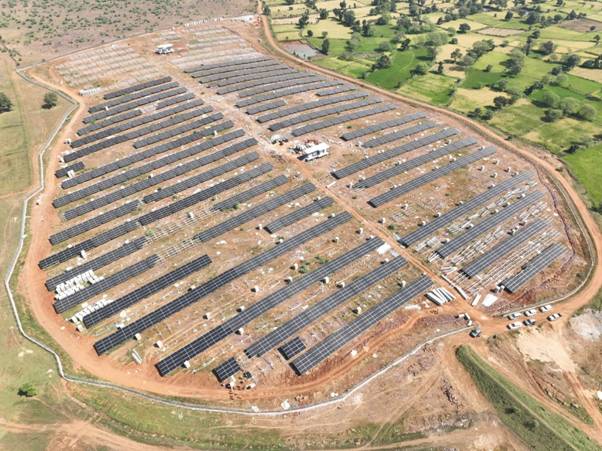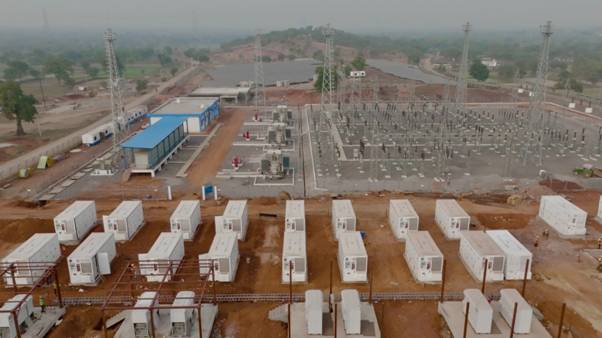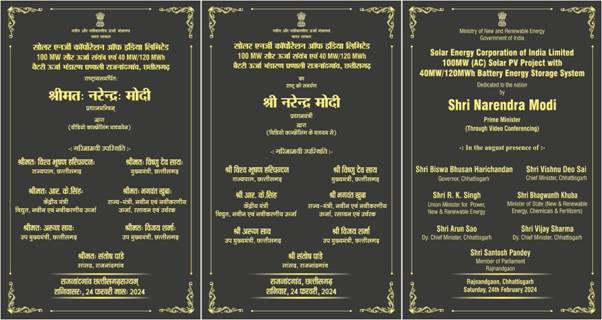
The Solar Energy Corporation of India Limited (SECI), under the aegis of the Ministry of New and Renewable Energy, has successfully commissioned India’s largest Battery Energy Storage System (BESS), which stores energy using solar energy. The 40 megawatts (MW) / 120MWh BESS with a solar photovoltaic (PV) plant which has an installed capacity of 152.325 megawatt hour (MWh)and dispatchable capacity of 100MW AC (155.02 MW peak DC) is located in Rajnandgaon, Chhattisgarh. The energy would be purchased by the state of Chhattisgarh, thus contributing to meeting the peak energy demand of the state using green electrons andalso towards its renewable purchase obligations.The project has been dedicated to the nation by Prime Minister Shri Narendra Modi via video conferencing today, February 24, 2024.

The project using solar panels and battery storage represents a monumental leap forward in generation and use of renewable energy. The project utilizes battery storage for storing solar energy when the sun is shining and using it later during hours of peak demand in the evening, for meeting the electricity demand in the state. The project has deployed bifacial modules, which reflect the light from the ground, thus generating more electricitythan monofacial modules, hencesetting a new standard for large-scale renewable energy projects.
A unique aspect of this project is its strategic use of previously unused land. Through a tripartite land-use permission agreement among the Energy Department of the Government of Chhattisgarh, Chhattisgarh State Power Distribution Company Limited (CSPDCL), and SECI, 451 acres of waste land across 9 villages in Tehsil Dongargarh and Dongargaon, District Rajnandgaon, Chhattisgarh, have been repurposed. The project has thus adopted a sustainable approach to energy project development, while minimizing environmental impact.
The project ensures overall power stability and reliability by ensuring an efficient evacuation of power through a 132 kilo-volt (kV) double-circuit double-string transmission line to Chhattisgarh State Power Transmission Company Limited’s (CSPTCL) 220/132 kilovolt (kV) Thelkadih substation, facilitating seamless integration into the existing power grid.

This project is estimated to save tonnes of carbon dioxide emissions annually. SECI’s long-term power purchase agreement with the state electricity distribution company (CSPDCL) underscores the economic viability of the project and support for such renewable energy endeavours.
The project has been constructed with funding from the World Bank and Clean Technology Fundunder Innovation in Solar Power & Hybrid Technologies Projectas well as leveraged financing from domestic lending agencies. This further highlights the collaborative efforts to drive sustainable financial arrangements, making the project commercially attractive and viable.
This project is expected to have a far-reaching positive impact on the renewable energy landscape and in promoting responsible utilization of land resources in India and globally.

***
PIB DELHI | Dheep Joy Mampilly



